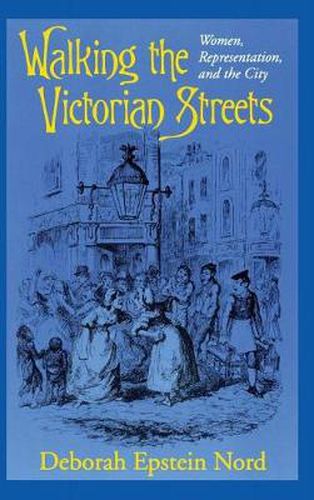Readings Newsletter
Become a Readings Member to make your shopping experience even easier.
Sign in or sign up for free!
You’re not far away from qualifying for FREE standard shipping within Australia
You’ve qualified for FREE standard shipping within Australia
The cart is loading…






Literary traditions of urban description in the nineteenth century revolve around the figure of the stroller, a man who navigates and observes the city streets with impunity. Whether the stroller appears as fictional character, literary persona, or the nameless, omnipresent narrator of panoramic fiction, he casts the woman of the streets in a distinctive role. She functions at times as a double for the walker’s marginal and alienated self and at others as connector and contaminant, carrier of the literal and symbolic diseases of modern urban life. Deborah Epstein Nord explores the way in which the female figure is used as a marker for social suffering, poverty, and contagion in texts by De Quincey, Lamb, Pierce Egan, and Dickens. What, then, of the female walker and urban chronicler? While the male spectator enjoyed the ability to see without being seen, the female stroller struggled to transcend her role as urban spectacle and her association with sexual transgression. In novels, nonfiction, and poetry by Elizabeth Gaskell, Flora Tristan, Margaret Harkness, Amy Levy, Maud Pember Reeves, Beatrice Webb, Helen Bosanquet, and others, Nord locates the tensions felt by the female spectator conscious of herself as both observer and observed. Finally, she considers the legacy of urban rambling and the uses of incognito in texts by George Orwell and Virginia Woolf.
$9.00 standard shipping within Australia
FREE standard shipping within Australia for orders over $100.00
Express & International shipping calculated at checkout
Literary traditions of urban description in the nineteenth century revolve around the figure of the stroller, a man who navigates and observes the city streets with impunity. Whether the stroller appears as fictional character, literary persona, or the nameless, omnipresent narrator of panoramic fiction, he casts the woman of the streets in a distinctive role. She functions at times as a double for the walker’s marginal and alienated self and at others as connector and contaminant, carrier of the literal and symbolic diseases of modern urban life. Deborah Epstein Nord explores the way in which the female figure is used as a marker for social suffering, poverty, and contagion in texts by De Quincey, Lamb, Pierce Egan, and Dickens. What, then, of the female walker and urban chronicler? While the male spectator enjoyed the ability to see without being seen, the female stroller struggled to transcend her role as urban spectacle and her association with sexual transgression. In novels, nonfiction, and poetry by Elizabeth Gaskell, Flora Tristan, Margaret Harkness, Amy Levy, Maud Pember Reeves, Beatrice Webb, Helen Bosanquet, and others, Nord locates the tensions felt by the female spectator conscious of herself as both observer and observed. Finally, she considers the legacy of urban rambling and the uses of incognito in texts by George Orwell and Virginia Woolf.